 |
|
HOME
|
US Navy -
ships
|
US Navy - air
units
|
USMC - air
units
|
International
Navies
|
Weapon Systems
|
Special Reports |
|
United Kingdom - Royal Navy City (Type 26) class Frigate |
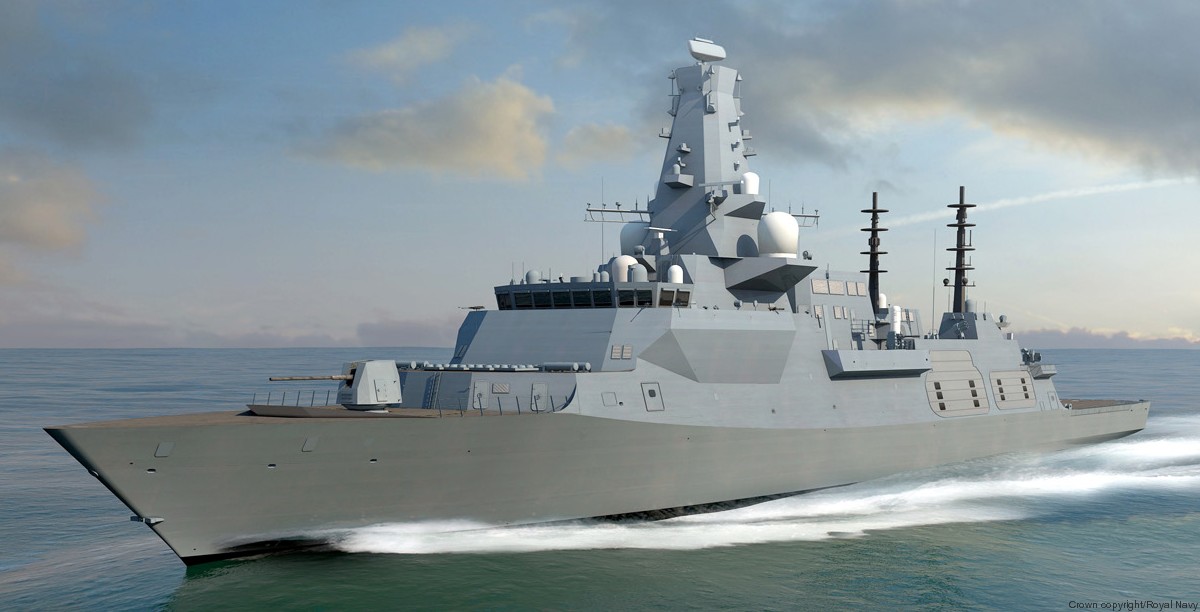 |
| 09/25 |
| Ships: |
|
Batch 1: F 88 HMS Glasgow F 89 HMS Cardiff F 90 HMS Belfast Batch 2: F 91 HMS Birmingham F 92 HMS Sheffield F 93 HMS Newcastle F 94 HMS Edinburgh F 95 HMS London |
| Specifications: |
|
Builder: BAE Systems
Maritime - Naval Ships, Scotstoun & Govan Shipyards (Glasgow),
Scotland, UK Length: 149.9 meters (491 ft 10 in) Beam: 20.8 meters (68 ft 3 in) Draft: ? Displacement: 6,900 tons (standard) / 8,000 tons (full load) Speed: 26+ knots (48+ km/h) Range: 7,000+ NM (13,000+ km) Complement: 161 core crew (capacity for 208) Propulsion: CODLOG (combined Diesel-Electric or Gas) 2 x Rolls-Royce MT30 gas turbines 4 x MTU 20V 4000 M53B high-speed diesel generators 2 x electric motors 2 shafts / 2 controllable-pitch propellers Armament: Sea Ceptor Vertical Launching System (VLS) - 12 cells for up to 48 CAMM + CAMM-ER SAM Missiles (4 per cell) Mk.41 Vertical Launching System (VLS) - 24 cells for BGM-109 Tomahawk TLAM Missiles RUM-139 VL-ASROC Anti-Submarine Missiles CAMM + CAMM-ER SAM Missiles or RIM-162 Evolved Sea Sparrow Missile / ESSM (quad packed) FC/ASW (Future Cruise/Anti-Ship Weapon) 1 x BAE Mk.45 Mod.4 (5"/62 - 5-inches/62-caliber) gun 2 x DS30M Mk.2 30mm machine gun system 2 x Mk.15 Phalanx CIWS 2 x M134 Miniguns Aviation: large flight deck (Chinook capable) and hangar for 2 helicopters (Wildcat HMA2 or Merlin HM2) and/or UAV's Systems: BAE Type 997 Artisan 3D radar Kelvin Hughes SharpEye navigation radar Terma SCANTER 6000 2D X-Band navigation radar Thales Sonar 2087 towed array sonar system (TASS) Ultra Electronics Type 2150 bow sonar 3 x Sea Eagle FCEO (Fire Control Electro Optical) SCOT-5 satcom IRVIN-GQ DLF decoy system Surface Ship Torpedo Defence (SSTD) System decoy launchers |
|
The Type 26 frigate or City-class frigate is a class of frigates
being built for the United Kingdom's Royal Navy. The programme,
known as the Global Combat Ship, was launched by the UK Ministry of
Defence to partially replace the navy's thirteen Type 23 frigates,
and for export. Its primary role is to conduct advanced
anti-submarine warfare missions while supporting air defence and
general purpose operations. The type is the first naval platform
shared between Australia, Canada and the United Kingdom since the
Tribal-class destroyer. The programme began in 1998, under what was then known as the Future Surface Combatant (FSC). However, by March 2010, this procurement programme had evolved to become the Global Combat Ship, following the announcement of a four-year, £127 million design contract being awarded to BAE Systems Maritime - Naval Ships. The design passed Main Gate 1 in early 2015, with the Demonstration Phase starting 1 April 2015. In August 2015 the first long lead items for Type 26 were ordered, with manufacturing then expected to begin in 2016 and the first Type 26 to be delivered in 2023. In November 2016 it was announced that first steel would be cut for the eight Royal Navy ships in summer 2017. They will be built at BAE Systems' Govan and Scotstoun yards on the River Clyde in Glasgow. The contract award to manufacture the Type 26 was announced by BAE Systems on 2 July 2017, with steel cut for the first of class, HMS Glasgow on 20 July 2017 by the then Secretary of State for Defence, Sir Michael Fallon. Development: Future Surface Combatant: The Global Combat Ship started development under the original Future Surface Combatant (FSC) programme intended to replace the Royal Navy's Type 22 and Type 23 frigates. Planning for a replacement escort vessel started in 1998 with the ordering of a research vessel, RV Triton, to study whether a trimaran design was practical for such a large and complex vessel. However, more conventional designs were ultimately preferred. In March 2005, plans were released for a two-class solution, a cheaper "Medium Sized Vessel Derivative" entering service in 2016-19 and a more capable "Versatile Surface Combatant" entering service around 2023. In early 2006 the MoD started a Sustained Surface Combatant Capability (S2C2) programme which explored synergies between the FSC and other needs, for minesweepers, patrol ships and survey ships. By early 2007 this had crystallised into the three requirements; C1, C2 and C3. The C1 was to be an anti-submarine warfare task group-enabled platform and would displace around 6,000 tonnes. C2 was to be a more general purpose platform displacing somewhere in the region of 4000-5000 tonnes, and C3 was to be a Global Corvette to replace a larger number of smaller vessels in service, such as minesweepers, patrol and survey ships. The Global Corvette was to displace around 2000-3000 tonnes. The C3 concept found its roots in early 2004 when the MoD issued a Request for Information (RFI) for a smaller class of ship known as the Global Corvette. Low running costs and the ability to operate forward in shallow, coastal areas where larger ships cannot, were both important. BAE Systems, VT Group, Thales and Rolls-Royce responded in autumn 2004 with concepts ranging from a well equipped Offshore Patrol Vessel (OPV) of 1,500 tonnes to an advanced and very capable "corvette" of 3,000 tonnes, along the lines of the USN's Littoral Combat Ship programme (LCS). The FSC concept was brought forward in the 2008 budget, at the expense of options for two Type 45 destroyers not being taken up (ships 7 and 8). In 2009 BAE Systems received a contract to design the C1 and C2 frigates with a planned 25-year life. A total of 18 vessels (10 C1 and 8 C2) were planned to enter service from 2020, at a pace of roughly one per year. In early 2010 the C3 variant was dropped in favour of the Mine Countermeasures, Hydrography and Patrol Capability (MHPC) programme. Global Combat Ship: Official mention of the Future Surface Combatant had all but disappeared by 2010, and on 25 March of that year BAE Systems were given a four-year, £127 million contract by the Ministry of Defence to fully design a new class of warship, the "Global Combat Ship", previously C1 of the FSC. Expectations at the time were for the first ship to be "in service" by 2021. The October 2010 Strategic Defence and Security Review (SDSR) reaffirmed the government's commitment to the Global Combat Ship, saying; "As soon as possible after 2020 the Type 23 will be replaced by Type 26 frigates, designed to be easily adapted to change roles and capabilities depending on the strategic circumstances". As part of the defence review it was also announced that the remaining Type 22 frigates would be decommissioned without replacement, reducing the Royal Navy's escort fleet from 23 destroyers and frigates to 19 (6 Type 45 destroyers and 13 Type 23 frigates). BAE Systems' original working baseline for the Global Combat Ship design was a vessel 141 metres long with a displacement of 6,850 tonnes and a range of 7,000 nautical miles at 18 knots. However, on 30 November 2010 it was reported that the specifications had been pared down, in effort to reduce the cost from £500M to £250-350M per ship. Subsequently, new specification details began to emerge of a smaller 5,400 tonne ship emphasising flexibility and modularity. Unlike the FSC, the Global Combat Ship has only one hull design. However like the Franco-Italian family of FREMM multipurpose frigates, three versions are proposed for export: a design optimised for anti-submarine warfare (ASW), an anti-aircraft warfare (AAW) variant, and a general purpose (GP) variant. Although a decision was made in November 2010 to reduce the specifications and capability requirements of the Global Combat Ship design, BAE Systems' design concepts by 2014 had returned to their original working baseline of a large 6,900 tonne warship. In February 2015, the MoD and BAE Systems signed a £859 million contract to continue development and progress towards manufacturing. A 12-month demonstration phase began on 1 April 2015 and, after a 12-month extension in March 2016, was scheduled to be completed in June 2017. On 2 July 2017, BAE Systems announced it had been awarded a c£3.7 billion contract by the UK MoD to manufacture the first three Type 26 ships. The statement said that steel would be cut for the first ship in Glasgow "in the coming weeks." In September 2015, the programme cost was estimated at £11.5 billion, for what was then assumed to be for 13 Global Combat Ships. The cost for the current eight ships was quoted as £8 billion in 2016. Three ships were ordered in 2017 for £3.7 billion. Characteristics: The Global Combat Ship is designed with modularity and flexibility in mind to enhance versatility across the full range of operations, including maritime security, counter piracy, counter terrorist and humanitarian and disaster relief operations. The adaptable design will facilitate through-life support, ensuring upgrades can easily be undertaken as technology develops. As of 2017, BAE Systems' website suggests a displacement of 6,900 tonnes, a length of 149.9 m (492 ft) a beam of 20.8 m (68 ft) and a top speed in excess of 26 knots (48 km/h). The Global Combat Ship will have a core crew of 157 with room for a total of 208. The Global Combat Ship is designed for up to 60 days' endurance and a range of approximately 7,000 nautical miles (13,000 km). Located at the stern are facilities allowing for the deployment of rigid-hulled inflatable boats, unmanned surface vehicles or a towed array sonar. A large Integrated Mission Bay and hangar is located amidship, enabling a variety of missions and associated equipment. Aircraft similar in size to the Boeing Chinook can be flown off the large flight deck, and the hangar can accommodate up to two helicopters the size of an AgustaWestland Wildcat HMA2 or AgustaWestland Merlin HM2. The hangar also has space to accommodate unmanned aerial vehicles. The Royal Navy's version of the Global Combat Ship is referred to as the Type 26 frigate. This variant will be equipped with the Type 997 Artisan 3D search radar and Sea Ceptor (CAMM) air-defence missiles launched via 48 vertical launching system (VLS) canisters. Additional 24-cell Mark 41 "strike-length VLS" cells is positioned forward of the bridge which are capable of firing missiles such as the Tomahawk land-attack cruise missile, anti-submarine rockets, a future anti-ship missile, or quad-packed ESSMs. Like the Type 23 frigate it will replace, the Global Combat Ship will have an acoustically quiet hull for anti-submarine warfare and fitted with an Ultra Electronics Type 2150 next generation bow sonar and a powerful Sonar 2087 towed array. The Global Combat Ship will also be fitted with guns of various calibres. Instead of the RN's current 4.5 inch Mark 8 naval gun, the Global Combat Ship will be equipped with a NATO-standard BAE 5 inch, 62-calibre Mark 45 naval gun. Smaller guns include two Phalanx CIWS, two 30mm DS30M Mark 2 Automated Small Calibre Guns and a number of miniguns and general-purpose machine guns. The propulsion system of the RN ships will have a gas turbine direct drive and four high speed diesel generators driving two electric motors in a combined diesel-electric or gas (CODLOG) configuration. In 2012 Rolls Royce repackaged the MT30 used in the Queen Elizabeth-class aircraft carriers so that it would fit into smaller ships. The MT30 will be used in the Type 26. BAE Systems have suggested that some customers will install gas turbine engines and others will prefer to sacrifice 2-3 knots of speed by choosing cheaper diesel engines. The CODLOG configuration for propulsion is a simpler version of the Combined diesel-electric and gas (CODLAG) propulsion used on the Type 23 which this ship is to replace, and both of the Global Combat Ship's design contemporaries - the Queen Elizabeth-class aircraft carrier and the Type 45 destroyer - use integrated electric propulsion (IEP). Construction: The first steel for the first three of eight Royal Navy ships was cut on 20 July 2017. BAE Systems announced the award of the Type 26's first seven equipment manufacturing contracts in July 2015, these worth in excess of £170 million. Contracts were awarded to Babcock International for the ship's air weapons handling system; David Brown Gear Systems Ltd for the propulsion gearbox and the test facility; GE Power Conversion for the electric propulsion motor and drive system and testing facility; Raytheon Anschütz for the integrated navigation and bridge system including customer-specific design and development, a land-based integration facility, and a wide range of services; Rolls Royce Power Engineering for the gas turbine; Rohde & Schwarz UK Ltd for the communications systems; WR Davis of Canada for the uptakes and downtakes of the ship's funnel and exhaust system. In December 2016, BAE Systems announced the award of six additional Type 26 equipment manufacturing contracts with Detegase of Spain for sewage and water treatment, Salt Separation Services for desalination equipment, Johnson Controls for chilled water plants, Marine Systems Technology Ltd for gas-, weather-, and water-tight doors, hatches, and Rolls Royce for stabilisers and steering components. Also awarded a contract was Pellegrini Marine Equipments of Italy. These awards brought to £380 million the total investment in the supply chain for the Type 26. According to Gary McCloskey, head of Type 26 supply chain at BAE Systems, by March 2017 between 40 and 50 suppliers were engaged in the Type 26 programme, and about 33 had full contracts. On 5 April 2017 Raytheon Anschütz announced successful integration of Warship Electronic Chart Display Information System (WECDIS) into their Integrated Navigation and Bridge Systems (INBS) for the Type 26. In July 2017 BAE Systems stated that the Type 26 programme currently employs more than 1,200 people in the UK supply chain, and in the future the programme would secure more than 3,400 jobs across BAE Systems and the wider UK maritime supply chain. It was also stated in July 2017, that coinciding with the announcement of additional contracts, total investment in the Type 26 supply chain had reached £500 million. The 14 companies awarded contracts in the July announcement include Babcock for the helicopter landing grid, MSI Defence Systems for the small caliber gun, and Thales for the towed array system. The largest of the July-announced contracts are for the procurement of structural steel for the first three ships from UK and European steel mills by Dent Steel Services Ltd. Ships of the class: The original planning assumption for the Royal Navy was for thirteen Global Combat Ships (eight ASW and five GP), replacing the Type 23 frigate fleet like-for-like. However, as a result of the November 2015 Strategic Defence and Security Review it was decided that only the eight anti-submarine warfare Type 26 frigates would be ordered. The funding for the remaining five general purpose Type 26 frigates is instead to be spent on developing a new class of lighter and more affordable general purpose frigates (GPFF). Due to an expected lower cost, the government suggested it may allow an eventual increase in the total number of frigates in the Royal Navy. This general purpose frigate will be designated as the Type 31e frigate. In July 2016, BAE revealed two general purpose frigate designs to meet the requirement; the Avenger class and the Cutlass class. On 12 September 2019 it was announced that Babcock's Arrowhead 140 design, based on the Danish Iver Huitfeldt-class frigate, had been selected for the Type 31 frigate program. Naming the ships: During 2014, a campaign emerged to name one of the ships HMS Plymouth, although Royal Navy ship names are formed via the Ships' Names and Badges Committee. In July 2017, construction of the first ship began in Govan; at the same time as work on the ship was started, it was announced that it would be named HMS Glasgow. The second named unit (although planned as the third ship of Batch 1) was announced as HMS Belfast in September 2017. The Second World War era light cruiser HMS Belfast (C35), a museum ship, will be named "HMS Belfast (1938)" by the Imperial War Museum to avoid "any possibility of confusion". In March 2018 the First Sea Lord, Admiral Philip Jones, announced that the second ship of the class would be HMS Cardiff. In September 2018 it was announced that the first of the planned five Batch 2 ships would be HMS Birmingham. In November 2018, subsequent Batch 2 ships were announced as HMS Sheffield, HMS Newcastle, HMS Edinburgh and HMS London. Of the eight names, six were previously used as names of Type 42 destroyers, while the previous HMS London and HMS Sheffield were Type 22 frigates. An order for the final five ships in the class was formally placed in November 2022. source: wikipedia |
|
class + detail images for more images go to the individual ship's page |
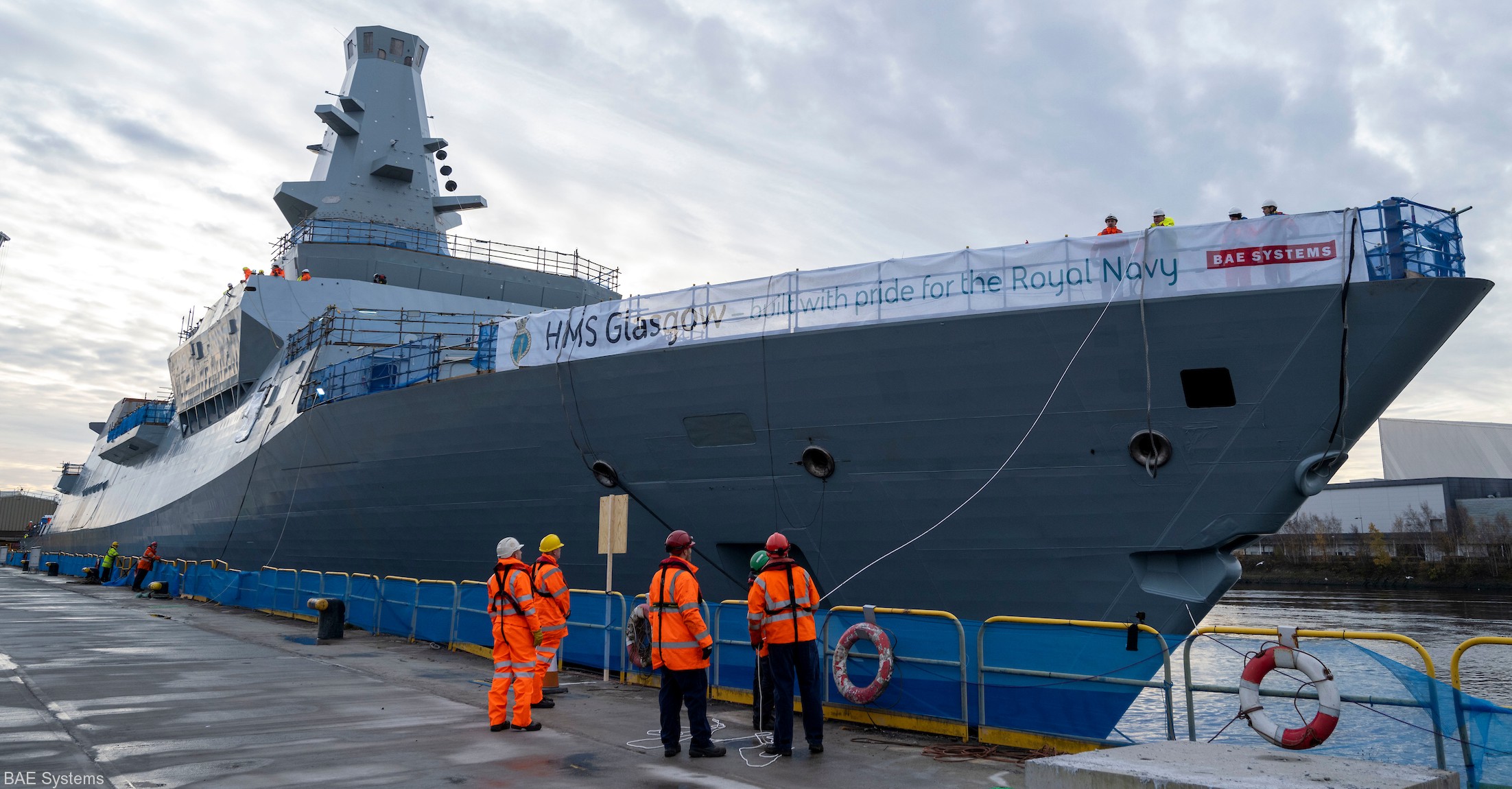 HMS Glasgow (F 88)  HMS Cardiff (F 89) 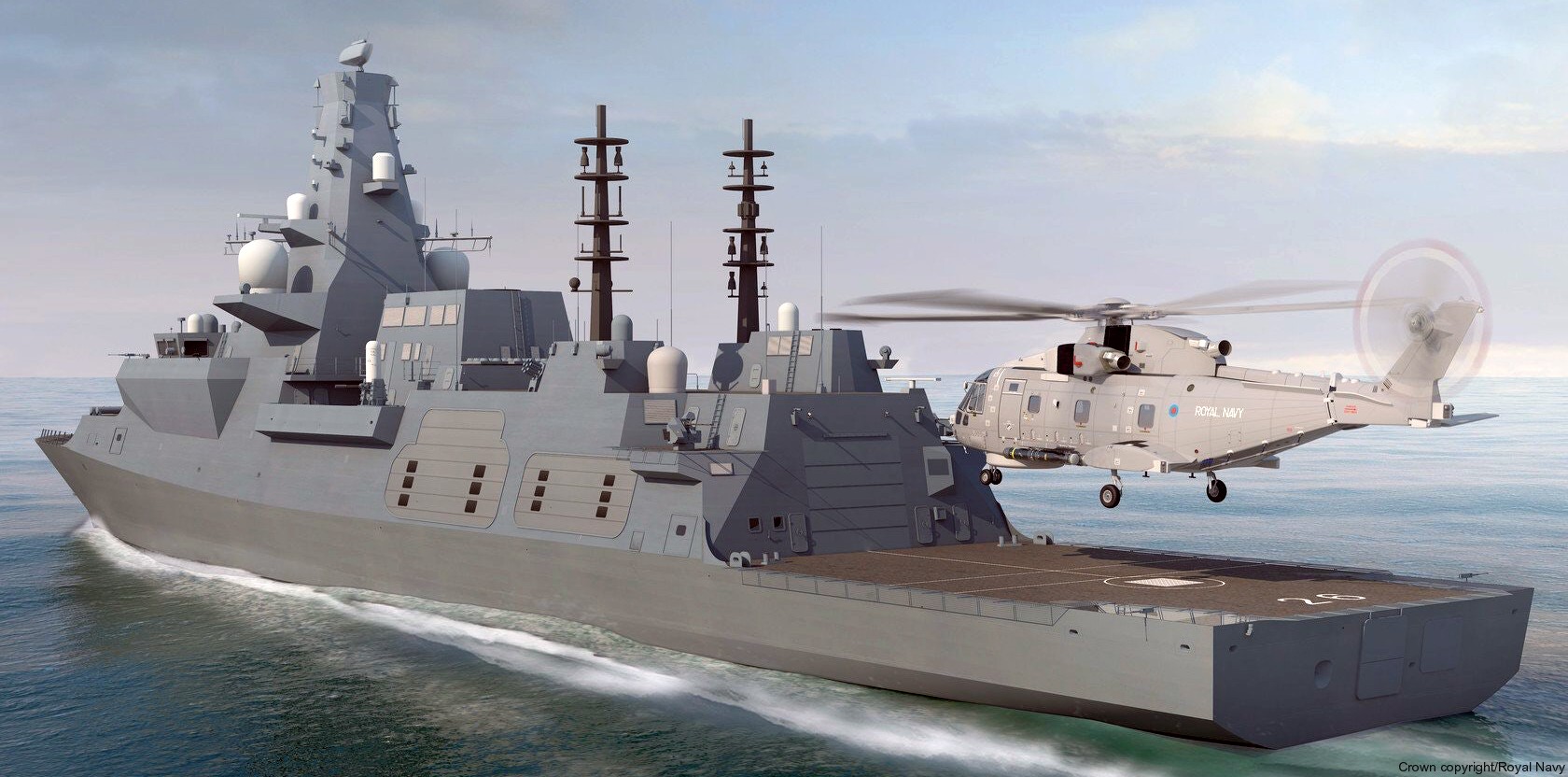 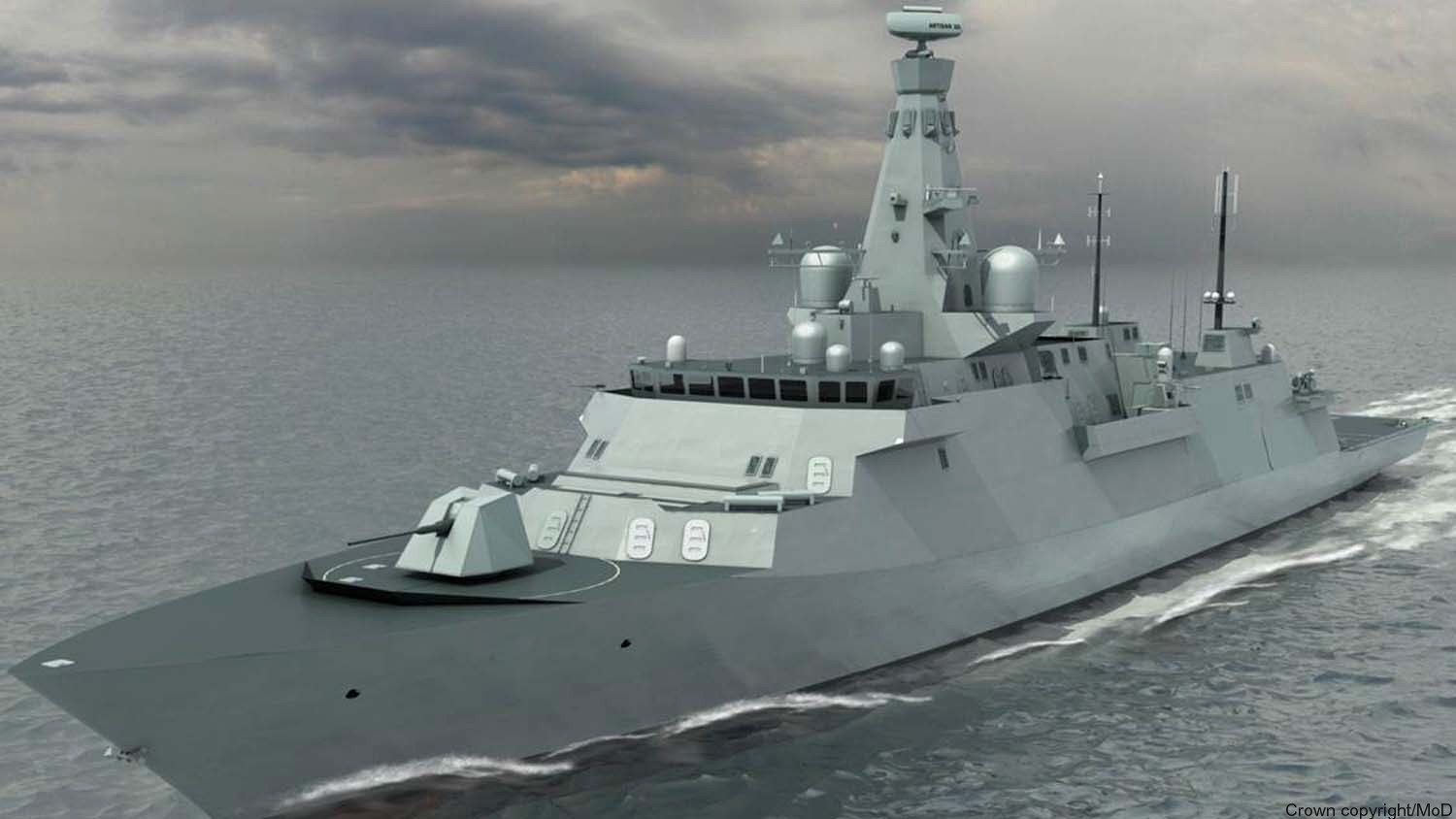 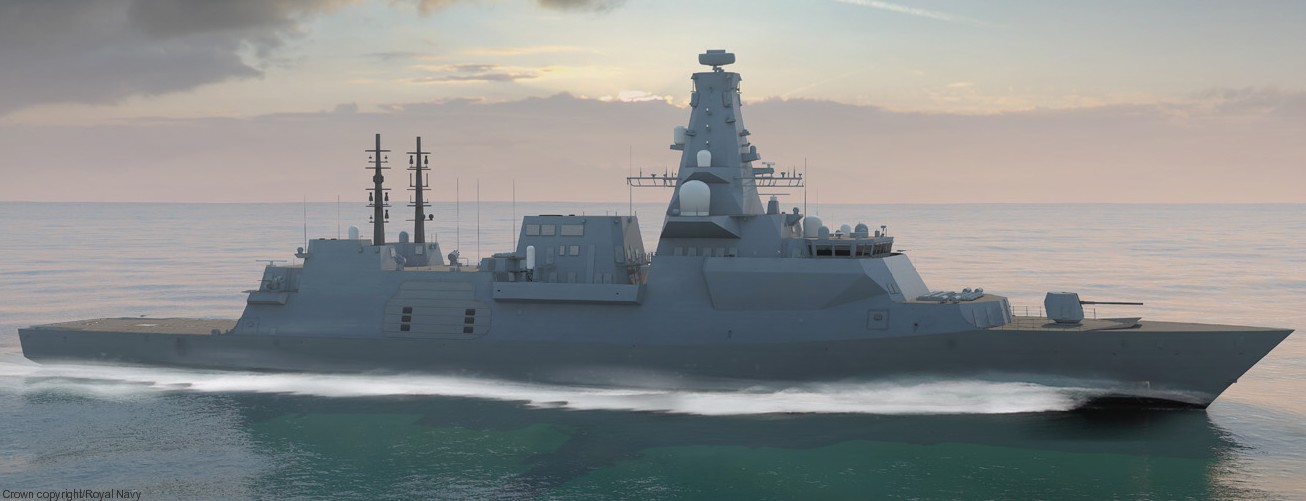 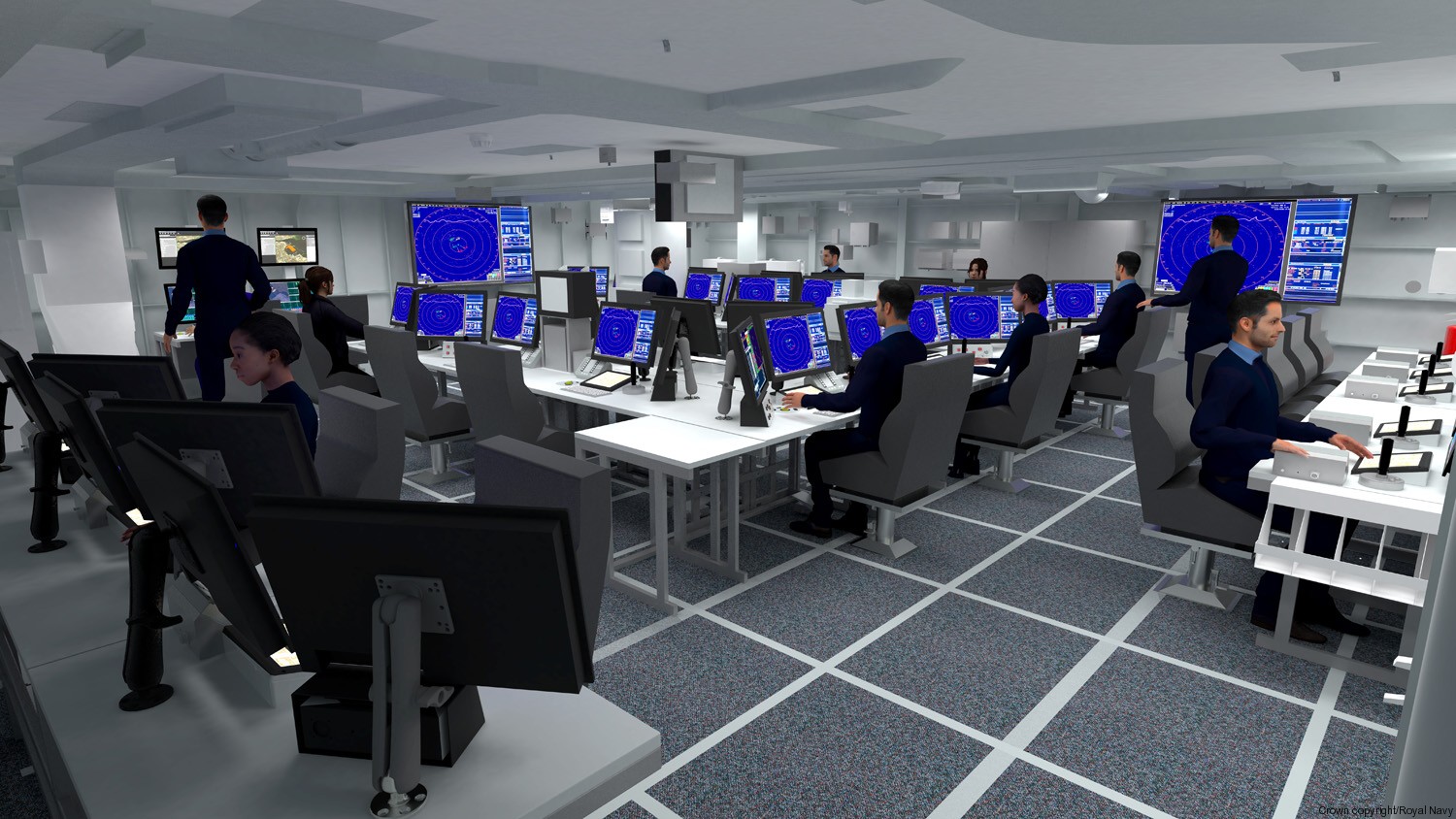 operations room 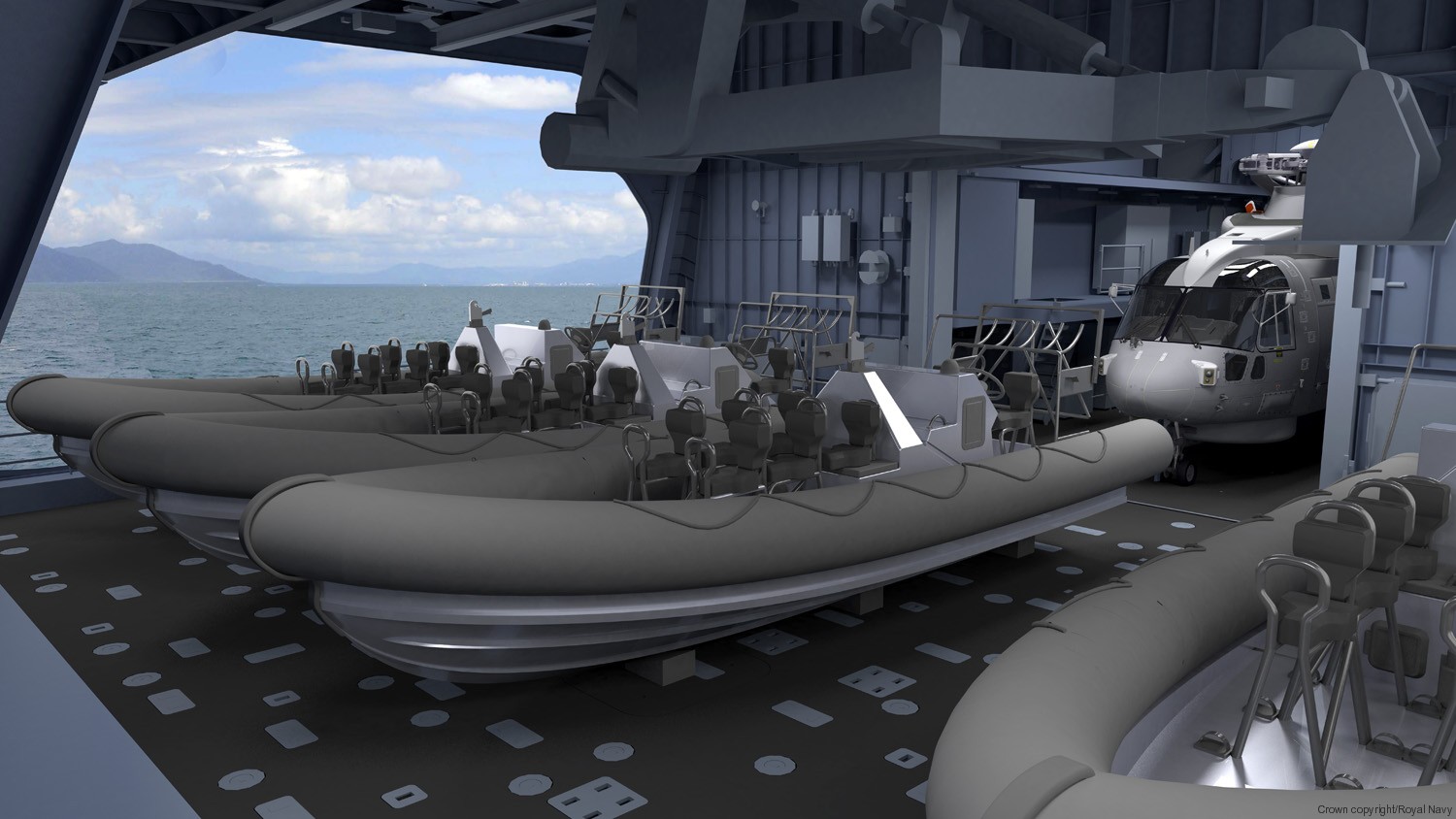 flexible mission bay 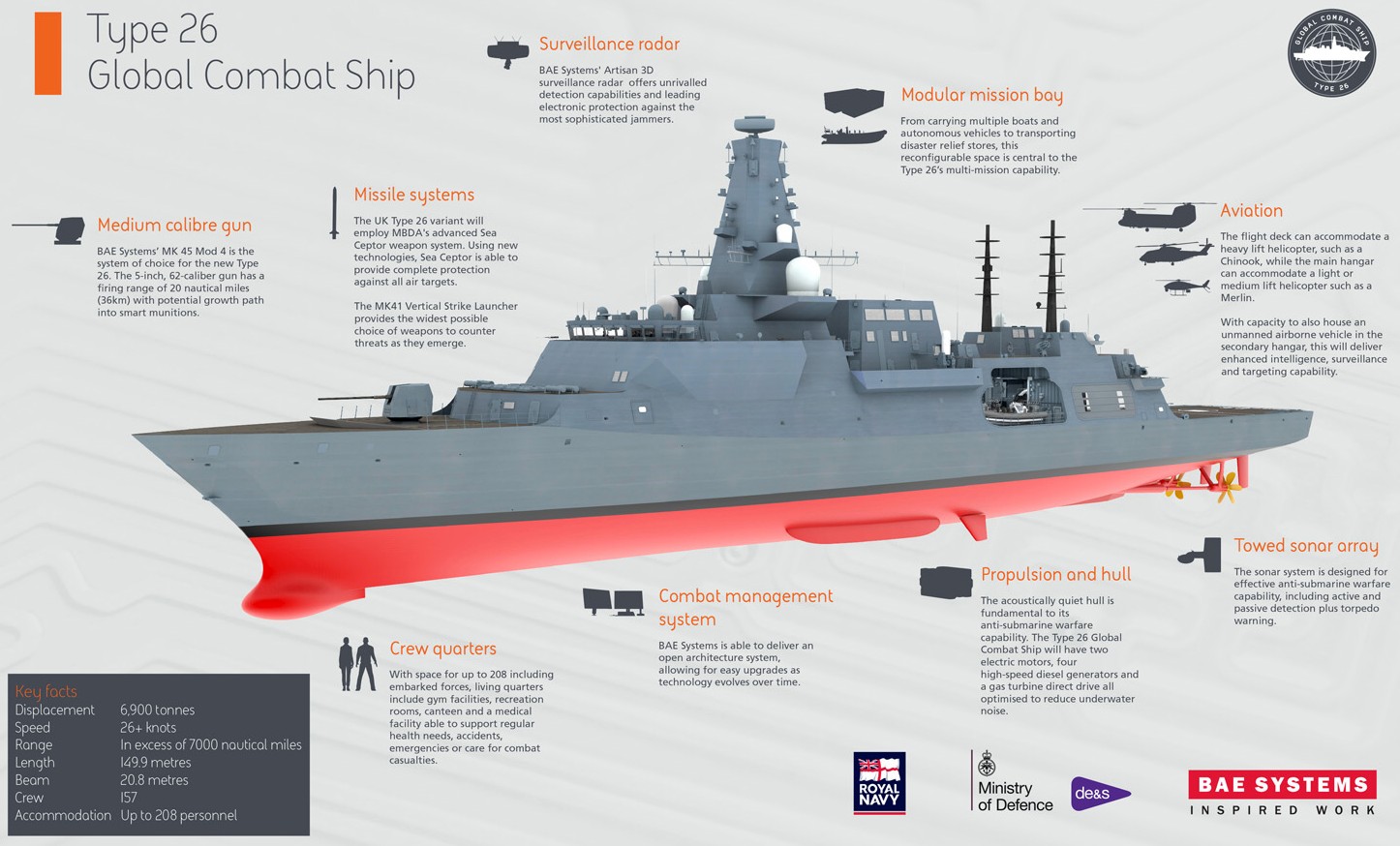 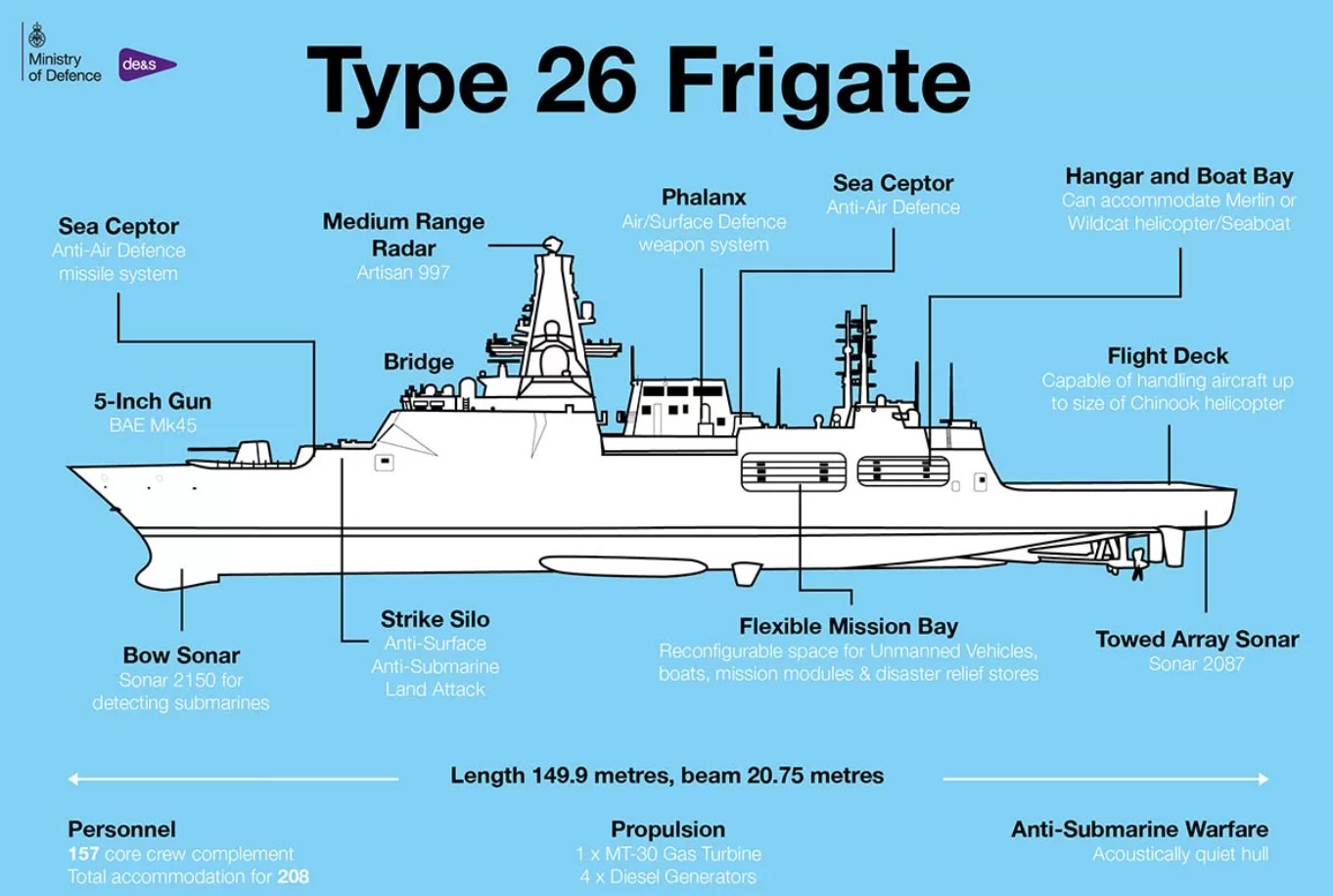 |
|
|
seaforces.org
|
Royal
Navy start page
| |